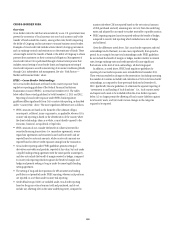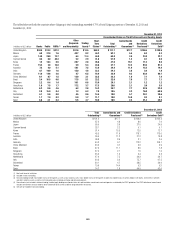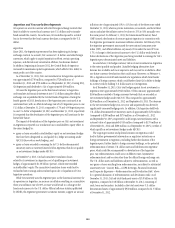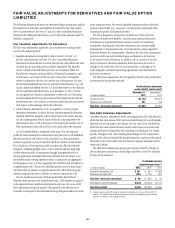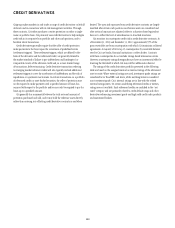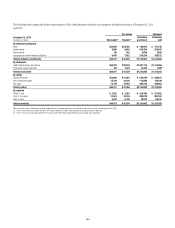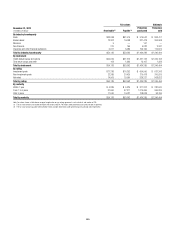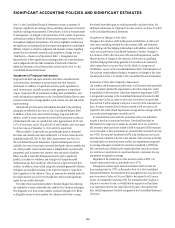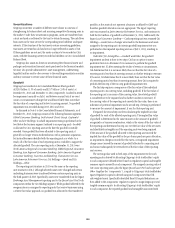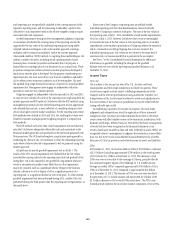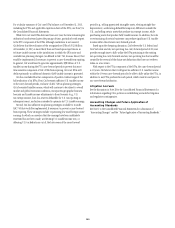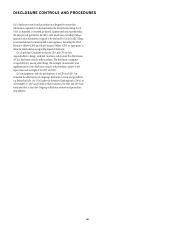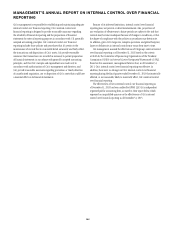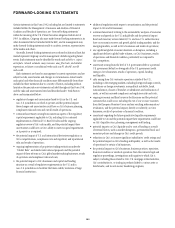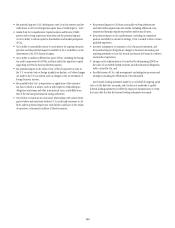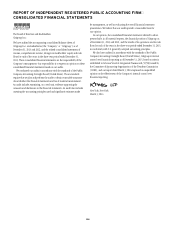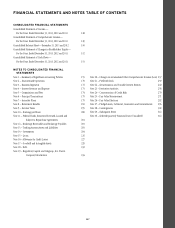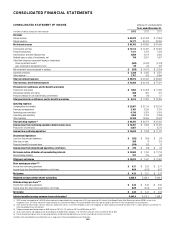Citibank 2013 Annual Report Download - page 156
Download and view the complete annual report
Please find page 156 of the 2013 Citibank annual report below. You can navigate through the pages in the report by either clicking on the pages listed below, or by using the keyword search tool below to find specific information within the annual report.138
Securitizations
Citigroup securitizes a number of different asset classes as a means of
strengthening its balance sheet and accessing competitive financing rates in
the market. Under these securitization programs, assets are transferred into
a trust and used as collateral by the trust to obtain financing. The cash flows
from assets in the trust service the corresponding trust liabilities and equity
interests. If the structure of the trust meets certain accounting guidelines,
trust assets are treated as sold and are no longer reflected as assets of Citi.
If these guidelines are not met, the assets continue to be recorded as Citi’s
assets, with the financing activity recorded as liabilities on Citi’s Consolidated
Balance Sheet.
Citigroup also assists its clients in securitizing their financial assets and
packages and securitizes financial assets purchased in the financial markets.
Citi may also provide administrative, asset management, underwriting,
liquidity facilities and/or other services to the resulting securitization entities
and may continue to service some of these financial assets.
Goodwill
Citigroup has recorded on its Consolidated Balance Sheet goodwill
of $25.0 billion (1.3% of assets) and $25.7 billion (1.4% of assets) at
December 31, 2013 and December 31, 2012, respectively. Goodwill is tested
for impairment annually on July 1 and between annual tests if an event
occurs or circumstances change that would more likely than not reduce
the fair value of a reporting unit below its carrying amount. No goodwill
impairment was recorded during 2013, 2012 and 2011.
As discussed in Note 3 to the Consolidated Financial Statements, as of
December 31, 2013, Citigroup consists of the following business segments:
Global Consumer Banking, Institutional Clients Group, Corporate/
Other and Citi Holdings. Goodwill impairment testing is performed at the
level below the business segment (referred to as reporting unit). Goodwill
is allocated to Citi’s reporting units at the date the goodwill is initially
recorded. Once goodwill has been allocated to the reporting units, it
generally no longer retains its identification with a particular acquisition,
but instead becomes identified with the reporting unit as a whole. As a
result, all of the fair value of each reporting unit is available to support the
allocated goodwill. The nine reporting units at December 31, 2013 were
North America Regional Consumer Banking, EMEA Regional Consumer
Banking, Asia Regional Consumer Banking, Latin America Regional
Consumer Banking, Securities and Banking, Transaction Services,
Latin America Retirement Services, Citi Holdings—Cards and Citi
Holdings—Other.
The reporting unit structure in 2013 was the same as the reporting
unit structure in 2012, although selected names were changed and certain
underlying businesses were transferred between certain reporting units in
the third quarter of 2013. Specifically, assets were transferred from the legacy
Brokerage Asset Management reporting unit to the Special Asset Pool, both
components within the Citi Holdings segment. While goodwill affected by the
reorganization is reassigned to reporting units that receive businesses using
a relative fair value approach, no goodwill was allocated to this transferred
portfolio as the assets do not represent a business as defined by GAAP and
therefore goodwill allocation was not appropriate. The legacy reporting
unit was renamed as Latin America Retirement Services, and continues to
hold the $42 million of goodwill as of December 31, 2013. Additionally, the
legacy Local Consumer Lending— Cards reporting unit was renamed Citi
Holdings—Cards, but no changes were made to the businesses and assets
assigned to the reporting unit. An interim goodwill impairment test was
performed on the impacted reporting units as of July 1, 2013, resulting in
no impairment.
Under ASC 350, Intangibles—Goodwill and Other, the goodwill
impairment analysis is done in two steps. Citi has an option to assess
qualitative factors to determine if it is necessary to perform the goodwill
impairment test. If, after assessing the totality of events or circumstances,
Citi determines that it is not more likely than not that the fair value of a
reporting unit is less than its carrying amount, no further testing is necessary.
If, however, Citi determines that it is more likely than not that the fair value
of a reporting unit is less than its carrying amount, then Citi is required to
perform the first step of the two-step goodwill impairment test.
The first step requires a comparison of the fair value of the individual
reporting unit to its carrying value, including goodwill. If the fair value of
the reporting unit is in excess of the carrying value, the related goodwill
is considered not to be impaired and no further analysis is necessary. If
the carrying value of the reporting unit exceeds the fair value, there is an
indication of potential impairment and a second step of testing is performed
to measure the amount of impairment, if any, for that reporting unit.
If required, the second step involves calculating the implied fair value
of goodwill for each of the affected reporting units. The implied fair value
of goodwill is determined in the same manner as the amount of goodwill
recognized in a business combination, which is the excess of the fair value of
the reporting unit determined in step one over the fair value of the net assets
and identifiable intangibles as if the reporting unit were being acquired.
If the amount of the goodwill allocated to the reporting unit exceeds the
implied fair value of the goodwill in the pro forma purchase price allocation,
an impairment charge is recorded for the excess. A recognized impairment
charge cannot exceed the amount of goodwill allocated to a reporting unit
and cannot subsequently be reversed even if the fair value of the reporting
unit recovers.
The carrying value used in both steps of the impairment test for each
reporting unit is derived by allocating Citigroup’s total stockholders’ equity
to each component (defined below) based on regulatory capital and tangible
common equity assessed for each component. The assigned carrying value of
Citi’s nine reporting units, plus the legacy Special Asset Pool and Corporate/
Other (together the “components”), is equal to Citigroup’s total stockholders’
equity. Regulatory capital is derived using each component’s Basel III
risk-weighted assets. Specifically identified Basel III capital deductions are
then added to the components’ regulatory capital to assign Citigroup’s total
tangible common equity. In allocating Citigroup’s total stockholders’ equity
to each component, the reported goodwill and intangibles associated with


